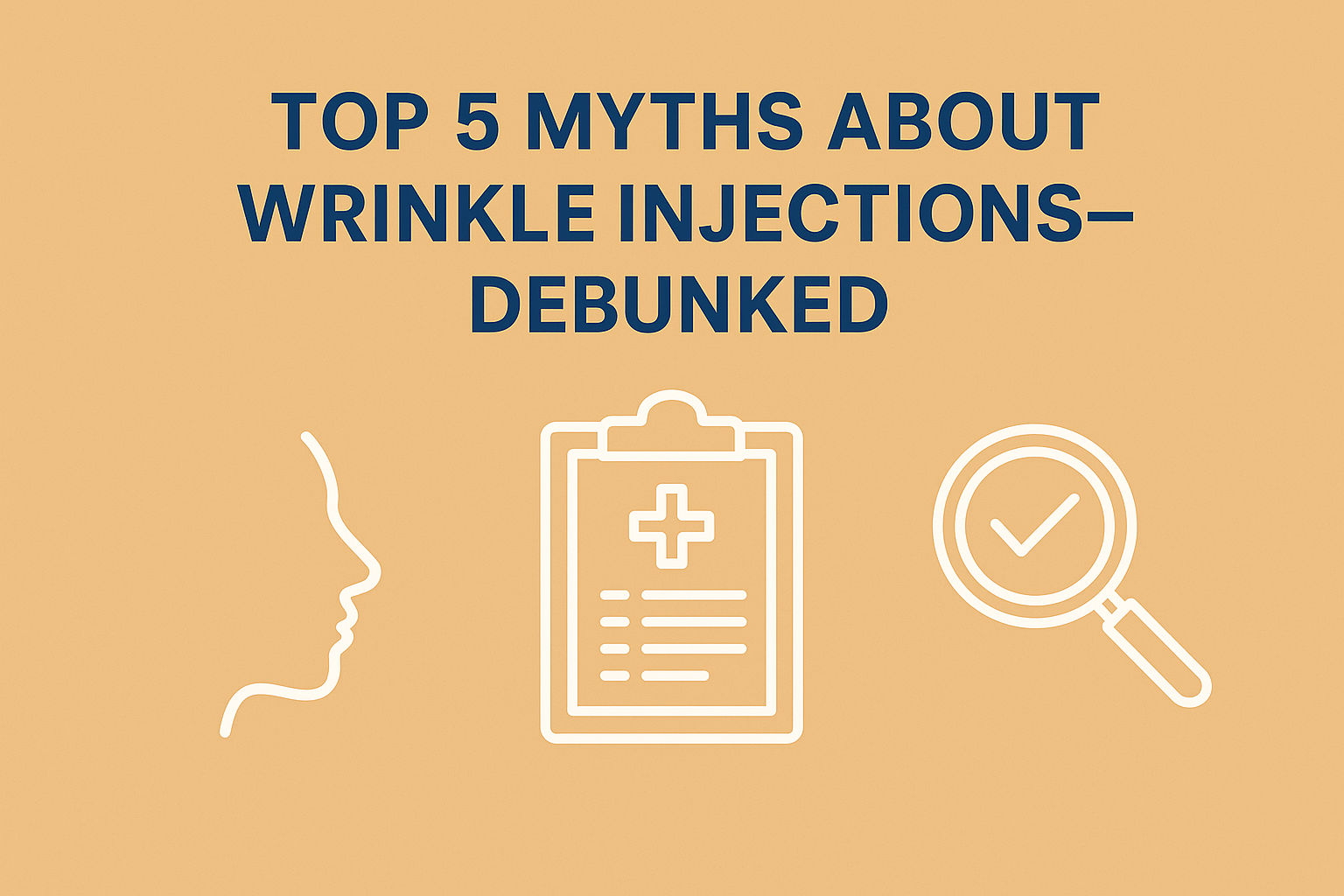Separating fact from fiction about one of the most commonly discussed cosmetic procedures in Australia
Wrinkle injections are one of the most widely talked-about cosmetic treatments today—but with that popularity comes a lot of misinformation. Whether you’re just starting to research options or you’ve heard mixed messages from friends or social media, it can be hard to know what’s true.
In this post, we’ll take an evidence-informed, medical look at five common myths about wrinkle injections and clarify what is and isn’t supported by current clinical knowledge. This information is intended for general education only and should not be taken as individual medical advice.
1. “Wrinkle injections freeze your face”
This is a common belief, but it oversimplifies how wrinkle-relaxing treatments actually work. These injections use a prescription-only medicine that is designed to reduce the activity of specific muscles responsible for dynamic wrinkles—lines that form through repetitive movement (like frowning or squinting).
When administered correctly by a qualified medical professional, the goal isn’t to “freeze” your face, but rather to soften lines while still allowing natural expression. The extent of movement reduction can vary depending on the dose and the treatment area.
2. “Once you start, you can’t stop”
There is no physiological dependency created by wrinkle injections. Some people choose to continue treatments regularly to maintain their results, but stopping does not worsen wrinkles. Over time, muscle movement returns, and the skin gradually reverts to its natural state based on factors like age, sun exposure, genetics, and lifestyle.
Continuing treatment is a personal choice, often guided by individual aesthetic goals rather than a medical need.
3. “It’s only for older people”
Preventative use of wrinkle injections has increased in recent years, with some individuals in their 20s and 30s using them to reduce the development of expression lines. However, this decision should always be made in consultation with a qualified health practitioner who can assess whether the treatment is appropriate for your skin type, facial anatomy, and overall health.
There is no universal “right age” for treatment. Clinical appropriateness depends on many individual factors, not just age.
4. “It’s unsafe or toxic”
The substances used in wrinkle injections are Schedule 4 prescription-only medications in Australia, and they can only be administered by, or under the supervision of, an authorised health practitioner. These medications have been used in various medical settings (not just cosmetic) for decades and are considered safe when administered in accordance with strict clinical guidelines.
However, like any medical treatment, there are potential risks and side effects. These should be discussed thoroughly during a consultation with a qualified provider, and informed consent must be obtained before proceeding.
5. “It works the same for everyone”
Individual results can vary based on facial structure, skin condition, metabolism, and how the body responds to the medication. Treatment plans are not “one size fits all” and should be tailored based on a thorough medical assessment.
Expectations should be realistic, and patients should understand that results develop gradually, usually over 3–7 days, and typically last 3–4 months depending on the individual.
🔍 A final word on medical cosmetic procedures
All wrinkle injections in Australia are regulated by the TGA and must be prescribed by a qualified health professional. As per Australian law, we are unable to name the specific products used, promote before-and-after imagery, or guarantee treatment outcomes. If you are considering wrinkle reduction treatments, it’s essential to seek professional medical advice tailored to your personal health and goals.
Disclaimer:
This article is intended for general information purposes only and does not constitute medical advice. Any decision to undergo a cosmetic procedure should be made in consultation with a qualified health practitioner.

